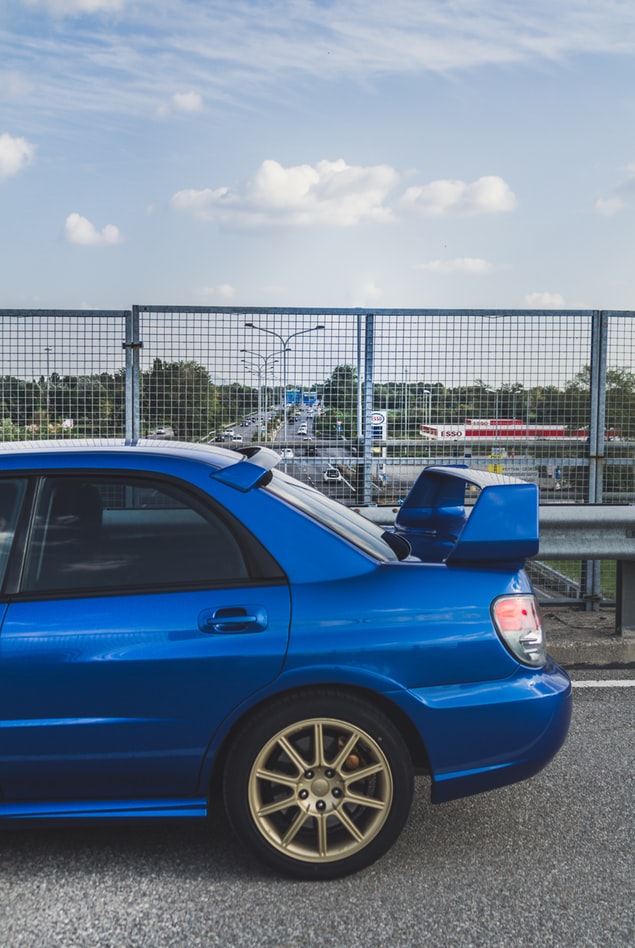What Are Ceramic Brakes

In motorsports, the Formula 1 showcase is a real laboratory for new technologies. Ceramic brakes are one of the components. But what is this innovation, whose name evokes fragility more than performance? And what will it weigh on a typical driver’s car? This post tells you everything about ceramic brakes.
Let’s First Take a Look at the Auto Braking System and Its Limits

A vehicle accumulates kinetic energy by rolling; it is potential energy that is transformed into destructive power in an accident against an obstacle or takes the form of calorific energy when the brakes are applied to slow down or stop the car.
Rising brake temperature is, therefore, a normal phenomenon, and the problem lies in the ability of the braking devices to dissipate this heat into the ambient air. The limit is reached during hard or prolonged braking where heat can damage the brake piston seals, brake discs and boil the brake fluid (fading), rendering them ineffective.
Technical Solutions: Carbon or Ceramic Brakes

Different corrective solutions exist to dissipate heat. The simplest and most cost-effective are ventilated or perforated discs.
The ventilated disc: it has two thicknesses between which air circulates for better cooling.
Perforated disc: several holes are drilled on the surface of the discs to improve cooling.
The replacement of steel discs by carbon or ceramic discs is also an effective alternative, the restriction for carbon discs being their prior heating to be functional.
Focus on Ceramic Brakes
This type of brake, which has nothing to do with traditional ceramic material, is made of composite ceramic. These are carbon brakes with added silica extracts. When heated in an industrial furnace, these discs acquire a hardness close to that of diamonds.
Advantages of Ceramic Brakes

Ceramic discs have high temperature operating capacity (up to 1,000°C). Also, their ease of not diffusing heat preserves the service life of neighbouring components and fluids (brake callipers, brake fluid, hubs, hub grease and transmissions, etc.).
A Long Service Life

Due to their hardness quality, the service life is equivalent or superior to that of the vehicle, i.e. 5 to 10 times longer than standard discs (for comparison, a set of steel discs is replaced on average every 50,000 km).
A Great Lightness

They are three times less heavy than traditional discs. It is an essential factor for unsprung masses (wheels and brakes). As a result of the above advantages, ceramic discs provide powerful and efficient braking at all temperatures.
Disadvantages of Ceramic Brakes

If ceramic brakes are a revolution, their diffusion on mass production vehicles is not yet topical, in particular for two main reasons:
The cost: it is exorbitant. For example, a ceramic brake package (discs + brake callipers) for an Audi RS 6 reaches $10,000.
The main reason is the extremely technical and time-consuming manufacturing process:
a porous carbon fibre matrix is gradually enriched and filled with composite materials, after various stages of formatting and drying;
the part obtained must come as close as possible to the final dimensional characteristics;
the last step consists in adding silica-based components to achieve, after a final drying, hardness close to a diamond, which complicates the last grinding operation of the disc intended to bring it precisely to its final dimension.
Because of the high manufacturing cost and complicated process, a very restrictive number of firms are capable of producing ceramic brakes. The leading developers are Brembo and Carbone Lorraine, for racing teams and optional equipment of prestigious models.
Some examples of available assemblies (the average price of a set of discs being $3 500):
Ceramic Brakes on Mass-Produced Cars?

As mentioned, the vehicles currently equipped (optional) are prestige and luxury vehicles, as well as competition prototypes.
Standard cars will have to wait a few more years for the evolution towards more flexible manufacturing processes and lower costs. If mass production reduces costs, ceramic brakes will always be higher than traditional brake discs (a set of steel discs is worth 50 to 150 dollars).
While the safety arguments in terms of performance are in favour of ceramic discs, traditional braking systems have evolved considerably, assisted by assistance devices (anti-lock brakes, tyre grip, new technologies linked to electric and hybrid vehicles, such as brake energy recovery, which make it possible to use the brakes less).
After All, Why Would You Need Ceramic Brake Pads on Your Car?

Do you drive like a Formula 1 pilot? Even if you wish so, it is not permissible to drive like that, as there are speed breakers and cameras everywhere in the world. Suppose you don’t mind paying all the fines, you drive like crazy, will you need ceramic brakes? The actual brake pads are already performing great and offering optimal safety levels. Unless you plan to take part in a car rally or you want to drive aggressively like you never want to stop until the remaining last seconds and last centimetres remaining between your car and any obstacle, then you might need ceramic brakes. But for now, even if you owe a Mercedes AMG, ceramic brakes are not a must, really.


